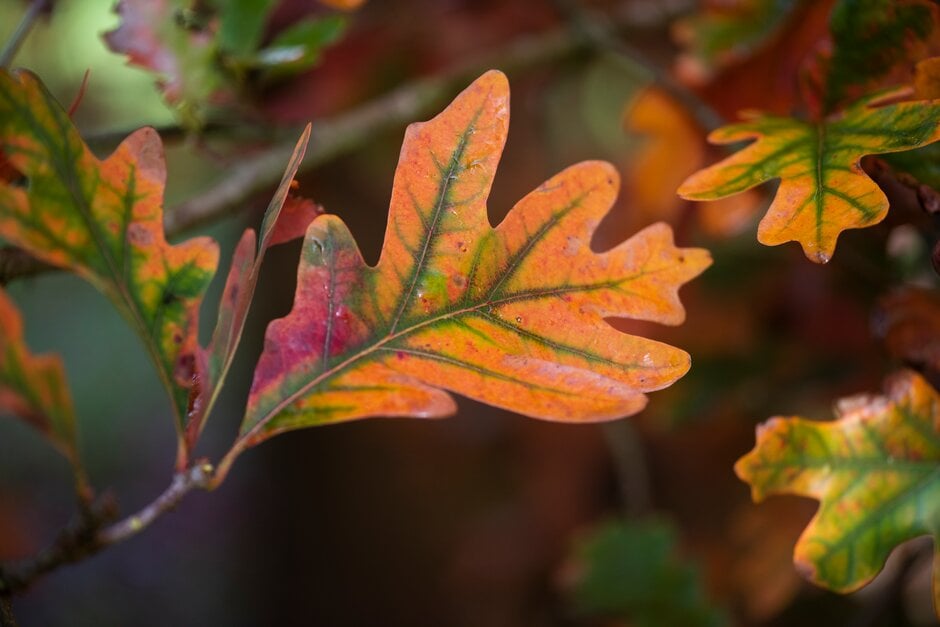Quercus alba
white oak
A large, vigorous deciduous tree with a pyramidal shape when young developing into a wider tree with a more rounded crown as it matures. Bark is greyish-white and yellow-green insignificant catkins appear in spring prior to the foliage. Foliage emerges pink, changing to dark green then reddish brown in the autumn. Brown acorns appear in the autumn
Size
Ultimate height
Higher than 12 metresTime to ultimate height
20–50 yearsUltimate spread
4–8 metresGrowing conditions
Moisture
Moist but well–drained, Well–drainedpH
Acid, NeutralColour & scent
| Stem | Flower | Foliage | Fruit | |
| Spring | Grey Silver White | Yellow Green | Pink | |
|---|---|---|---|---|
| Summer | Grey Silver White | Green | ||
| Autumn | Grey Silver White | Red Brown | Brown | |
| Winter | Grey Silver White |
Position
- Full sun
- Partial shade
Aspect
East–facing or South–facing or West–facing
Exposure
Exposed or Sheltered Hardiness
H7Botanical details
- Family
- Fagaceae
- Native to GB / Ireland
- No
- Foliage
- Deciduous
- Habit
- Bushy
- Potentially harmful
- Pets (dogs): Harmful if eaten - for further information and contact numbers regarding pets, see the HTA guide to potentially harmful plants
- Genus
Quercus can be deciduous or evergreen trees or shrubs, with entire, lobed or toothed leaves; flowers inconspicuous, followed by characteristic acorns; sometimes good autumn colour
- Name status
Correct
- Plant range
- Canada, USA
How to grow
Cultivation
Grow in deep, fertile, well-drained soil. A fast growing spreading deciduous tree. Requires lime free soil
Propagation
Propagate by seed, sowing as soon as ripe, in a coldframe or grafting in mid-autumn or early winter
Suggested planting locations and garden types
- Architectural
- Low Maintenance
Pruning
Pests
May be susceptible to oak processionary moth, aphids, caterpillars, leaf-mining moths and oak gall wasps
Diseases
May be susceptible to powdery mildews and honey fungus
Get involved
The Royal Horticultural Society is the UK’s leading gardening charity. We aim to enrich everyone’s life through plants, and make the UK a greener and more beautiful place.
